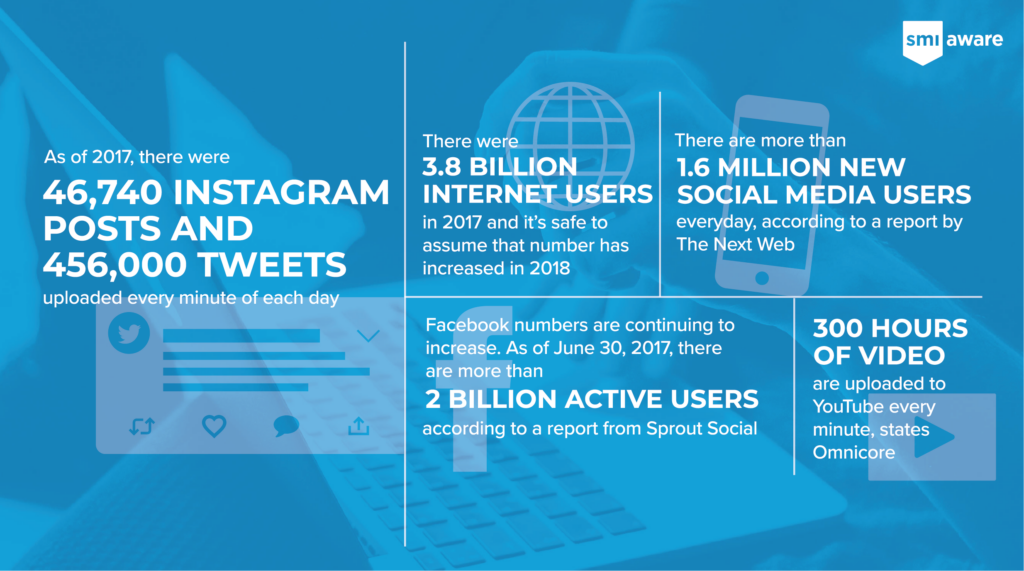Litigation cases involving all forms of electronic evidence, particularly social media, are on the rise. This upward trend has happened at a relatively quick pace with far-reaching impact in the legal field. These days, social media evidence requests during the discovery process have become common, so it’s important to understand how it works.
Let’s start by looking at these staggering numbers:
- There were 3.8 billion internet users in 2017, and it’s safe to assume that number has only increased in 2018.
- There are more than 1.6 million new social media users every day, according to a report by The Next Web.
- As of 2017, there were 46,740 Instagram posts and 456,000 tweets uploaded every minute of each day, finds Domo.
- 300 hours of video are uploaded to YouTube every minute, states Omnicore.
- Facebook numbers are continuing to increase, with more than 2 billion daily active users (as of June 30, 2017), per a report from Sprout Social.
Alone, these figures are rather astounding. Add them up, and you begin to see just how pervasive social media-generated data has become. Moreover, today, it has become the norm to share closely-held details of one’s personal life, making it all the more difficult to assess.
User-generated, social media content requires the expert touch of analysts to find evidence that’s relevant to your case. The discovery process is a time-sensitive and necessary one, especially taking into account the many streams of social media content going out at any one moment. So, here’s a breakdown of the web and social media e-discovery process:
Social media discovery begins with the collection of data. Reaching out to us here at SMI Aware is a recommended first step so we can start our process before any holdups happen, such as opposing counsel advising their client to delete evidence. By engaging our services early on and allowing our analysts to perform periodic monitoring, you will minimize the risk of losing usable evidence. Once evidence is deleted from social media, it cannot be recovered. Therefore, if a data collection system is not in place, the evidence is not admissible, even if screenshots are saved.
The evidence SMI Aware analysts collect is authenticated with metadata that holds posts in time. Even if a post is deleted, open source reports show source code that displays the date and time of a piece of social media evidence. This source code is stored on our secure servers.
Throughout the search phase, analysts search all social media profiles and connections, including photos and status updates a subject may be tagged in. Analysts also perform searches on the deep web, mobile native apps, online communities, search engine indexed content and more to find evidence. Any evidence found can then be exported and preserved before it disappears, and the defensibility of this evidence is guaranteed. The Export product archives these pieces of evidence into a searchable PDF so you can quickly find the information you need when you need it.
If necessary, analysts can complete affidavits or provide testimony for the collected evidence. It’s likely that you will soon find yourself in a case that hinges on social media evidence. Don’t let the evidence pass you by. Engage the experts to obtain pertinent evidence that’ll make an impact on your case.




